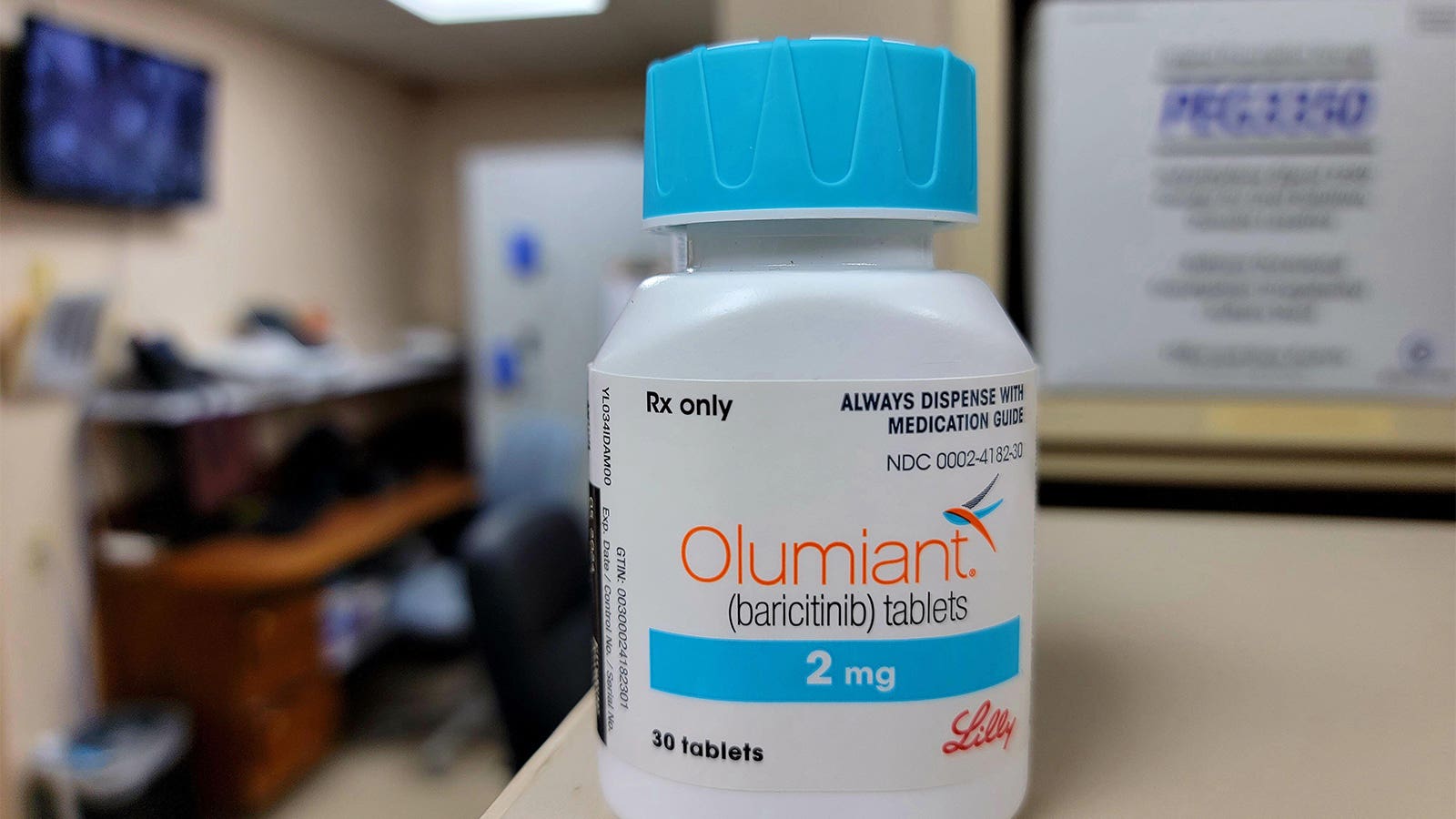— Daily baricitinib pill was also safe and well-tolerated
by
Kristen Monaco, Senior Staff Writer, MedPage Today
December 6, 2023
A Janus kinase (JAK) inhibitor helped preserve beta-cell function in people with recent-onset type 1 diabetes, the phase II BANDIT trial found.
Meeting the study’s primary endpoint, daily baricitinib (Olumiant) maintained a significantly higher average mixed-meal-stimulated C-peptide level at week 48 compared with placebo (0.65 vs 0.43 nmol/L/min, P=0.001), according to Thomas Kay, MBBS, PhD, of St. Vincent’s Institute of Medical Research in Melbourne, Australia, and colleagues.
Individuals on 4 mg/day baricitinib also required significantly less daily insulin at week 48 than placebo (0.41 vs 0.52 U/kg), the investigators reported in the New England Journal of Medicine.
This shows it’s possible to “arrest the progression of the autoimmune process that destroys insulin-producing beta-cells and retain the body’s ability to produce insulin,” Kay told MedPage Today.
The sooner therapy is initiated after a type 1 diabetes diagnosis, the more likely it will decrease the need for injected insulin, the BANDIT researchers suggested. They noted that the efficacy of baricitinib may also represent a class effect with other JAK inhibitors.
“This is about preserving insulin production rather than better ways of managing without insulin production,” Kay stressed. “Retained insulin production makes achieving good glycemic control easier and may lead to fewer future complications.”
He suggested that baricitinib may also have promise for preventing the onset of type 1 diabetes, though this hasn’t been tested yet.
Acting as a JAK1 and JAK2 inhibitor, baricitinib is already used to treat conditions such as rheumatoid arthritis, severe COVID-19, and alopecia areata. In type 1 diabetes, “inhibitors of the JAK1 and JAK2 isoforms impair cytokine-induced major histocompatibility complex class I expression in cultured islets and islet cells, impair CD8+ T-cell activation, and block the formation of immune synapses between beta-cells and CD8+ T cells to prevent the death of beta-cells,” the researchers explained.
The present trial comes during a recent shift away from type 1 diabetes therapies that solely treat the disease, towards agents that preserve beta-cell functioning. In the PROTECT trial, two 12-day courses of the anti-CD3 antibody teplizumab (Tzield) yielded 59.3% less loss of beta-cell function, with higher stimulated C-peptide levels at week 78 compared with placebo (least-squares mean difference 0.13 pmol/mL, 95% CI 0.09-0.17). This IV biologic was the first FDA approved agent to delay the progression of type 1 diabetes.
Baricitinib and teplizumab “have a broadly similar effect size,” said Kay, though he noted they have not been tested head-to-head. “One difference is the administration of a daily pill compared with a 10- to 14-day IV infusion. Also baricitinib, and related drugs, has been more widely used for many indications and for children down to 2 years.”
Other than their route of administration, the two therapies have different safety profiles, added accompanying editorial author Johnny Ludvigsson, MD, PhD, of Linköping University in Sweden, highlighting that there were no treatment-related serious adverse events with baricitinib. “This treatment has been used for many years as a treatment for juvenile idiopathic arthritis, and the safety profile of JAK inhibitors has been acceptable.”
In BANDIT, the rate of adverse events overall were numerically lower in the baricitinib group than in the placebo group (78% vs 84%, respectively), as were serious adverse events (2% vs 10%). Nearly all events were of the lowest grade. There were two ketoacidosis events in the baricitinib group and three in the placebo group.
“The relatively small number of patients and short duration of the trial limited the ability to identify rare adverse events,” Kay’s group acknowledged.
A total of 91 participants — 60 on baricitinib and 31 on placebo — were included in the BANDIT trial. Children and adults were included (average age 19 years) and all had been diagnosed with type 1 diabetes within the past 100 days. The majority were white and no patients were younger than 10 years, limiting the generalizability of the findings.
Measured by continuous glucose monitoring, the coefficient of variation of the interstitial glucose level at week 48 was 29.6% and 33.8% in the baricitinib and placebo groups, respectively. Baseline HbA1c was slightly lower in the baricitinib group (7% vs 7.5%) and was the same throughout the trial — “a finding that should be expected in a study in which the investigators do their best to provide good clinical care,” said Ludvigsson.
-
![author['full_name']](https://clf1.medpagetoday.com/media/images/author/kristenMonaco_188.jpg)
Kristen Monaco is a senior staff writer, focusing on endocrinology, psychiatry, and nephrology news. Based out of the New York City office, she’s worked at the company since 2015.
Disclosures
The study was supported by JDRF International, JDRF Australia, the Australian Government Department of Health through the Emerging Priorities and Consumer-Driven Research Initiative, the National Health and Medical Research Council of Australia, and St. Vincent’s Institute of Medical Research in Australia.
Kay and Ludvigsson reported no disclosures. A study co-author reported relationships with Eli Lilly, Novo Nordisk, and Sanofi.
Primary Source
New England Journal of Medicine
Source Reference: Waibel M, et al “Baricitinib and β-cell function in patients with new-onset type 1 diabetes” N Engl J Med 2023; DOI: 10.1056/NEJMoa2306691.
Secondary Source
New England Journal of Medicine
Source Reference: Ludvigsson J “Immune interventions at onset of type 1 diabetes — finally, a bit of hope” N Engl J Med 2023; DOI: 10.1056/NEJMe2312091.

Leave a Reply